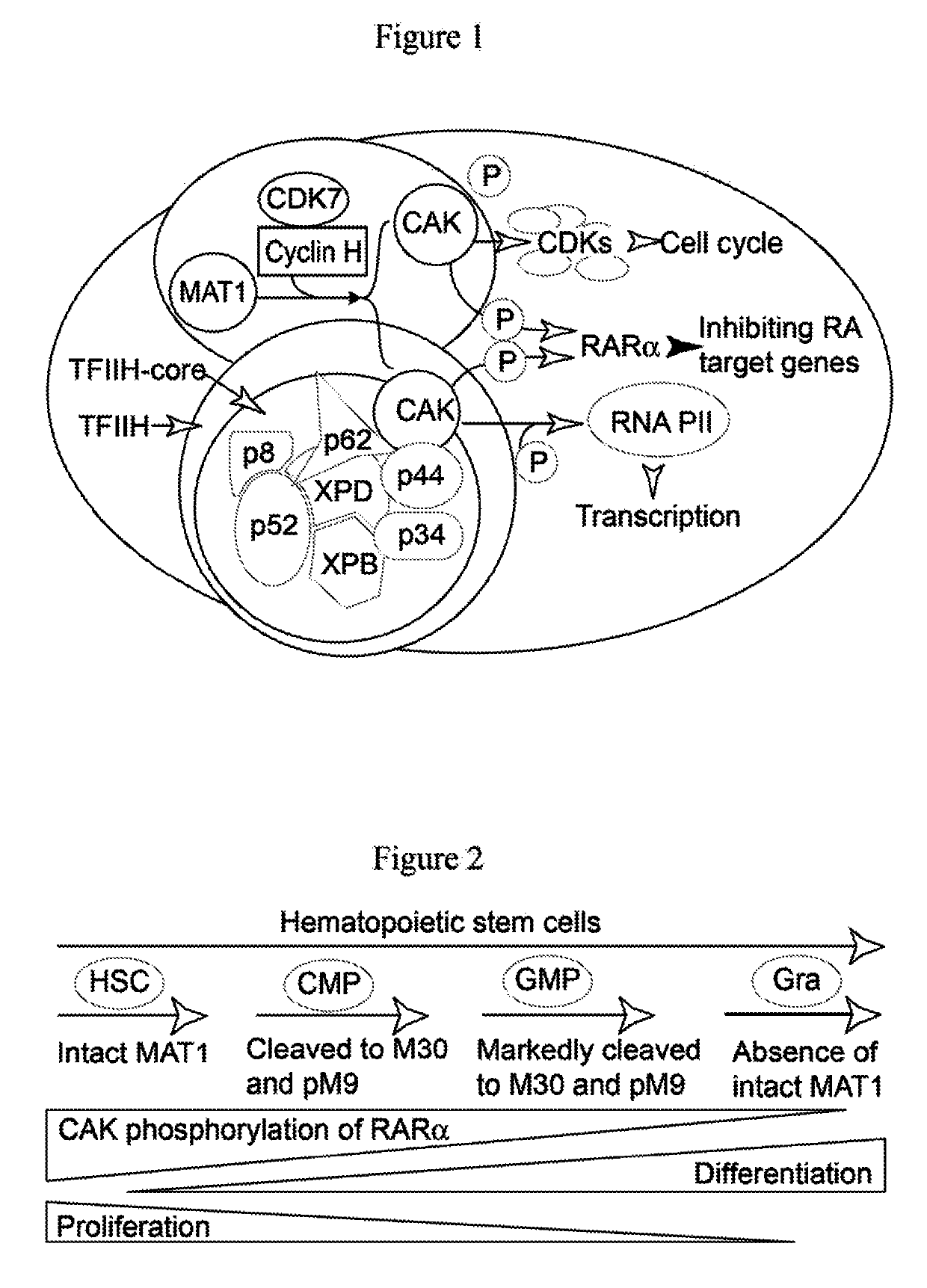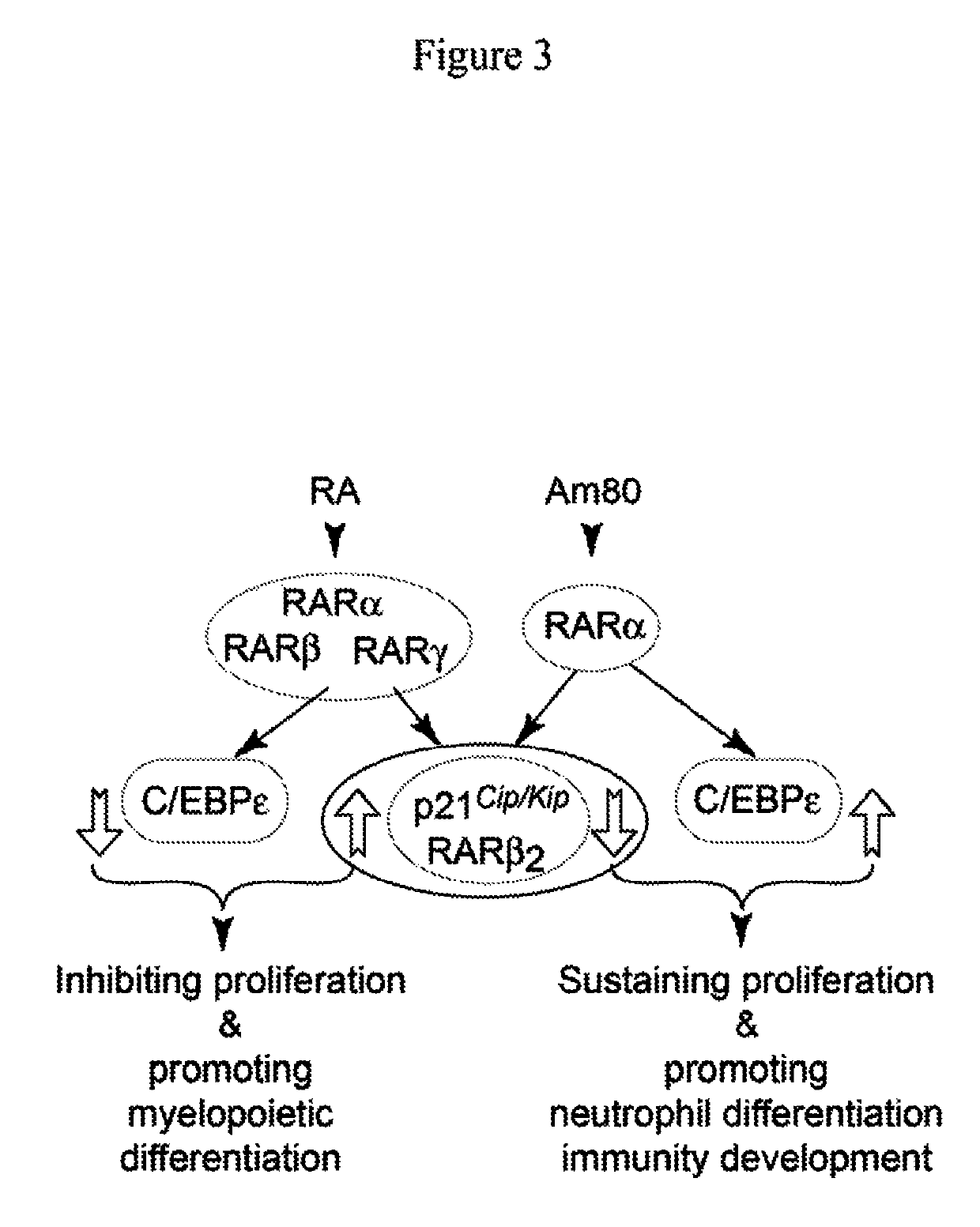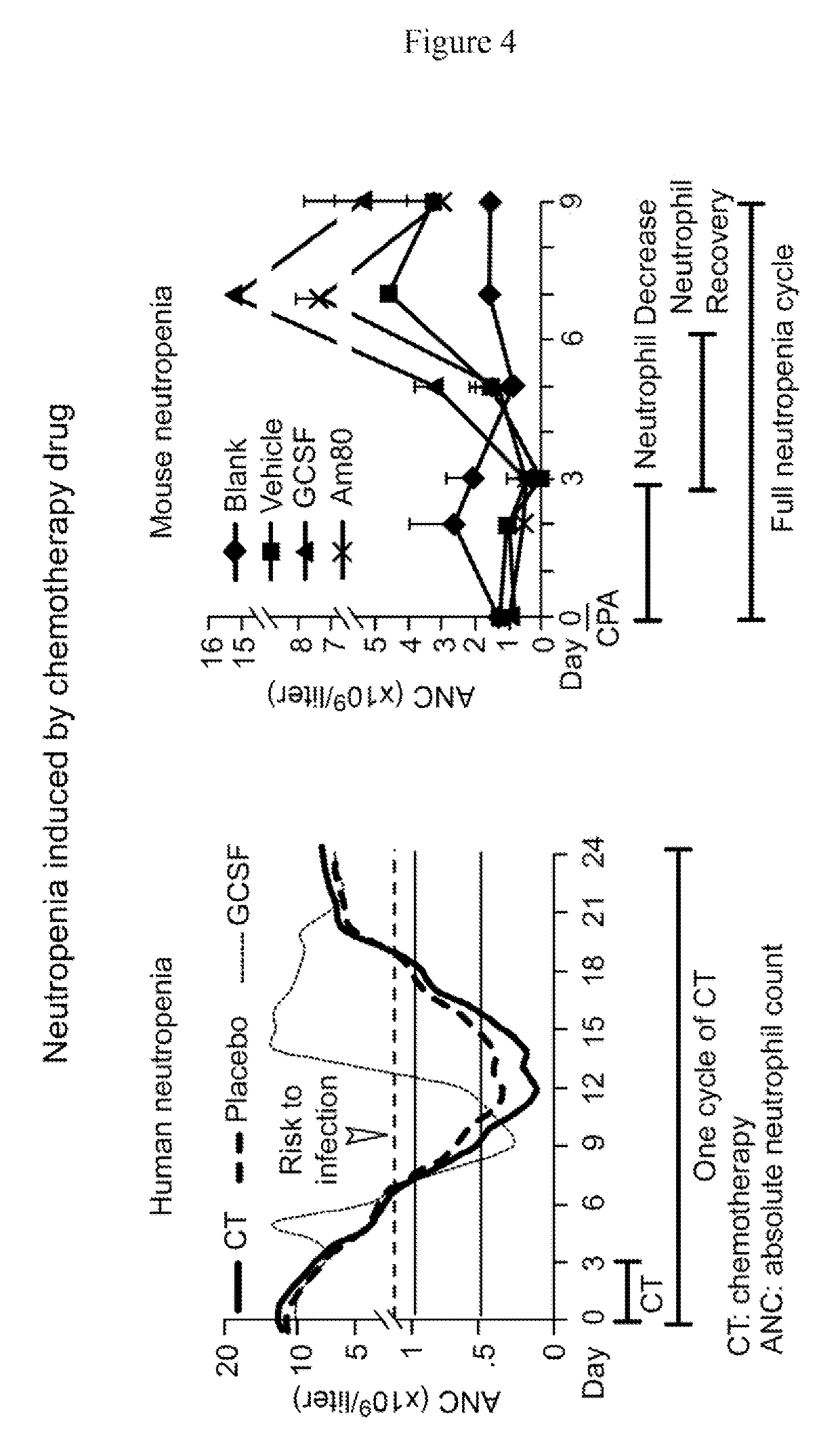Compositions and methods for treating neutropenia
a neutropenia and composition technology, applied in the field of compositions and methods for treating neutropenia, can solve the problems of affecting the treatment effect of ccin patients, and reducing the severity of ccin infection and infection, so as to reduce the severity of ccin infection and/or slow the progression of a condition in a subject. , to achieve the effect of preventing, slowing down the progression of a condition, and reducing the severity of a patien
- Summary
- Abstract
- Description
- Claims
- Application Information
AI Technical Summary
Benefits of technology
Problems solved by technology
Method used
Image
Examples
example 1
tic Expansion Vs. Myeloipoietic Differentiation Induced by Selective Activity of Am80
[0122]What are the mechanisms underlying the synergistic effect of Am80-GCSF on regeneration of mature neutrophils to reduce mortality of neutropenic mice exposed to bacteria? Cell-specific transcription patterns can be altered by modulating transcription factors, the master regulators of cell fate. All-trans retinoic acid (ATRA or RA) has high affinity binding to and transactivation of two classes of transcription factors, retinoic acid receptors (RARα, -β, -γ) and retinoid X receptors (RXRα, -β, -γ). Previous studies show that RA enhances HSC self-renewal through RARγ activation while promoting differentiation of committed myeloid progenitors through RARα activation. Such pan-action of RA exerts potent effects on inhibiting proliferation while promoting differentiation by activating RARα, -β, -γ subtypes in various normal and tumor tissues. By contrast, Am80 is a retinoid agonist designed to selec...
example 2
Pathway Modulating the Synergistic Effect of Am80-G-CSF
[0123]RARα is a substrate for cyclin-dependent kinase-activating kinase (CAK) complexes consisting of CDK7, cyclin H, and MAT1 proteins. CAK exists in cells either as a free CAK to regulate cell cycle progression by phosphorylation-activation of different CDKs, or as a kinase subunit of the TFIIH complex where it mediates transcription through phosphorylation of the RNA polymerase II C-terminal domain (RNA PII). Of note, either free CAK or TFIIH-containing CAK phosphorylates RARα to inhibit granulocytic differentiation (FIG. 1), whereas decrease in CAK phosphorylation of RARα mediated by either intrinsically programmed or RA-mediated MAT1 protein fragmentation induces granulocytic differentiation through RARα-dependent transcription of RA target genes (FIG. 2). We recently discovered that Am80 effect arises from its selective activation of RARα transcription factor to induce selective expression of RA target genes by inhibiting ...
example 3
ia Induced by Cancer Chemotherapy Drug and Neutrophil Recovery
[0124]As shown by Ding et al. (Blood 2013 Vol 121 page 996), Trillet-Lenoir et al. (Eur J Cancer 1993; Vol 29A (3), page 319), Lalami et al. (Ann Oncol 2006; Vol 17 (3), page 507) and Abdul Rasool Hassan et al. (Asian Pac J Cancer Prev, 2011; Vol 12(6), page 1425), cancer chemotherapy may be used to induce neutropenia. The median duration of severe neutropenia induced by cancer chemotherapy is 3-6 days in human (ANC9 / L) and 2-3 days in mouse, whereas GCSF can shorten neutropenic duration in both human and mouse by increasing number of neutrophils (FIG. 4). Our studies divide the 2 / 3 period of mouse neutropenia as neutrophil-decrease (no regimens can prevent reduction of neutrophils in either human or mouse) and neutrophil-recovery (BM function is still inhibited) stages (FIG. 4, right panel), during which the risk to microbial infections is significantly increased. An entire cycle of neutropenia covers neutropenia inducti...
PUM
 Login to View More
Login to View More Abstract
Description
Claims
Application Information
 Login to View More
Login to View More - R&D
- Intellectual Property
- Life Sciences
- Materials
- Tech Scout
- Unparalleled Data Quality
- Higher Quality Content
- 60% Fewer Hallucinations
Browse by: Latest US Patents, China's latest patents, Technical Efficacy Thesaurus, Application Domain, Technology Topic, Popular Technical Reports.
© 2025 PatSnap. All rights reserved.Legal|Privacy policy|Modern Slavery Act Transparency Statement|Sitemap|About US| Contact US: help@patsnap.com



